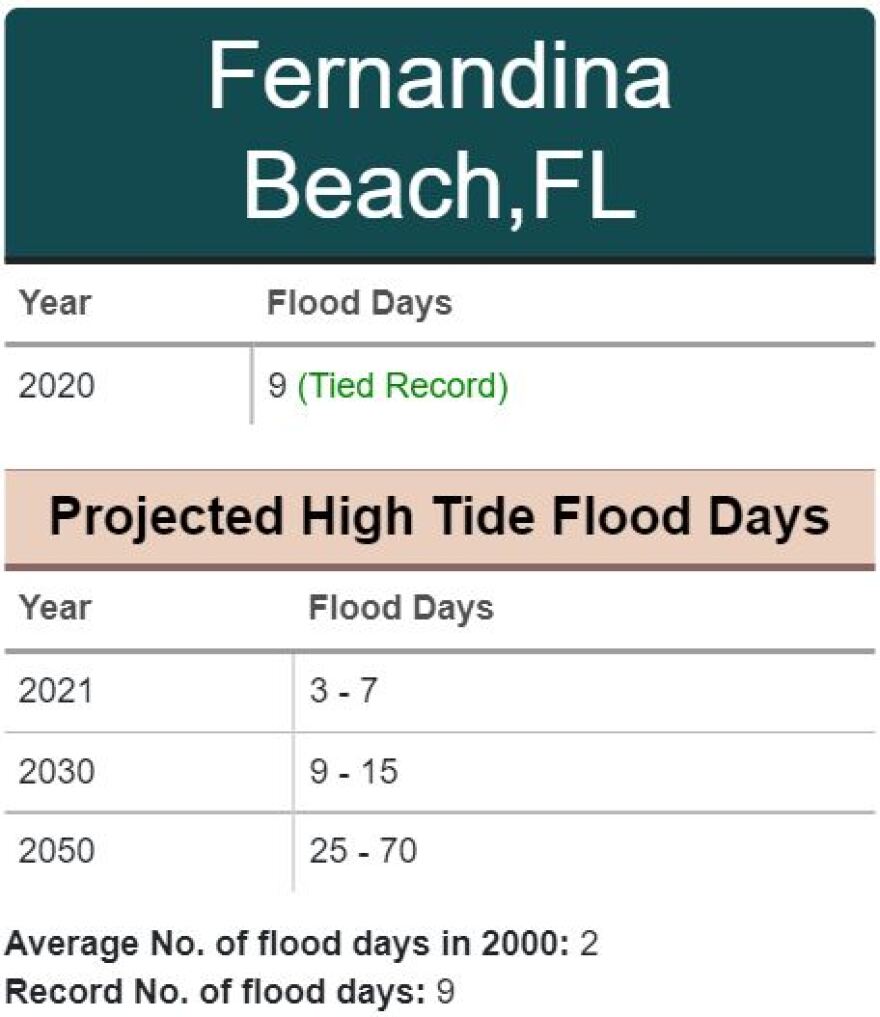Coastal communities across the state and nation, including some First Coast beaches, saw record high-tide flooding in 2020, and that trend is expected to continue into 2022 and beyond, according to a new report from the National Oceanic and Atmospheric Administration.
High-tide flooding, which is often referred to as “nuisance” or “sunny day flooding,” happens when tides get 1.75 to 2 feet above the daily average high tide, spilling into city streets or bubbling up from storm drains. The phenomenon is becoming increasingly common as sea levels continue to rise due to climate change, though land subsidence (the sinking of land) and other factors are also playing a role.
“Right now, they’re mostly minor as individual events, but the cumulative frequency is starting to become damaging and taxing on infrastructure around America,” said William Street, an oceanographer with the National Oceanic and Atmospheric Administration (NOAA). “Now’s the time to start planning on how to live with water and maintain the viability of these important coastal communities.”
The new report from NOAA finds that between May 2020 and April 2021, coastal communities saw twice as many high tide flood days as they experienced two decades ago. Fourteen of the 97 sites that were measured tied or broke their records for the number of high tide flood days, all of them along the U.S. Southeast Atlantic and Gulf coastlines, marking a 400-1100% increase over what was seen at the turn of the millennium.
The number of high tide flood events is now accelerating at four out of every five NOAA water level stations along the East and Gulf Coasts, including at Northeast Florida’s two stations: Fernandina Beach and Mayport, both of which had a record number of high tide flood days last year.


By the end of this decade, high tide flooding is expected to occur - on average - seven to 15 days every year throughout the country. By 2050, that is expected to jump to 25 to 75 days every year.
NOAA’s Mayport monitoring station measured a record eight high tide flood days in 2020, compared to just one in 2000. Only two to four are expected this year, but by the end of the decade NOAA is anticipating five to ten. By mid-century the number of annual high tide flood days is expected to be somewhere between 25 and 65 days.
The measuring station in Fernandina Beach also reported a record number of high tide flood days in 2020: nine. Just two were recorded in 2000. This year, three to seven are expected. By 2050, the area could see as many as 25 to 70 high tide flood days every year.

These impacts aren’t limited to the coast. A look at the map of projected high tide flood days shows that the banks of the St. Johns River are at increasing risk all the way down to Central Florida. The impacts in the river are likely being exacerbated by changes that have been made to the river over the past century.
Related: A Century Of Altering The St. Johns River Has Left Jacksonville More Vulnerable To Flooding
“I can't speak directly to that river, but it's something to be aware of for all these areas as bigger ships need to come into port and we’ve got to dredge deeper, it does affect the hydrology and hydraulics of these areas which can exacerbate an underlying issue of high tide flooding due to sea level rise and other reasons,” Sweet said.
While the anticipated rise in high tide flooding is pretty much baked in over the next three decades or so, Sweet says drastically reducing fossil fuel emissions over the coming years would likely help avoid worst case scenarios by the end of the century.
Brendan Rivers can be reached at brivers@wjct.org, 904-358-6396 or on Twitter at @BrendanRivers.







